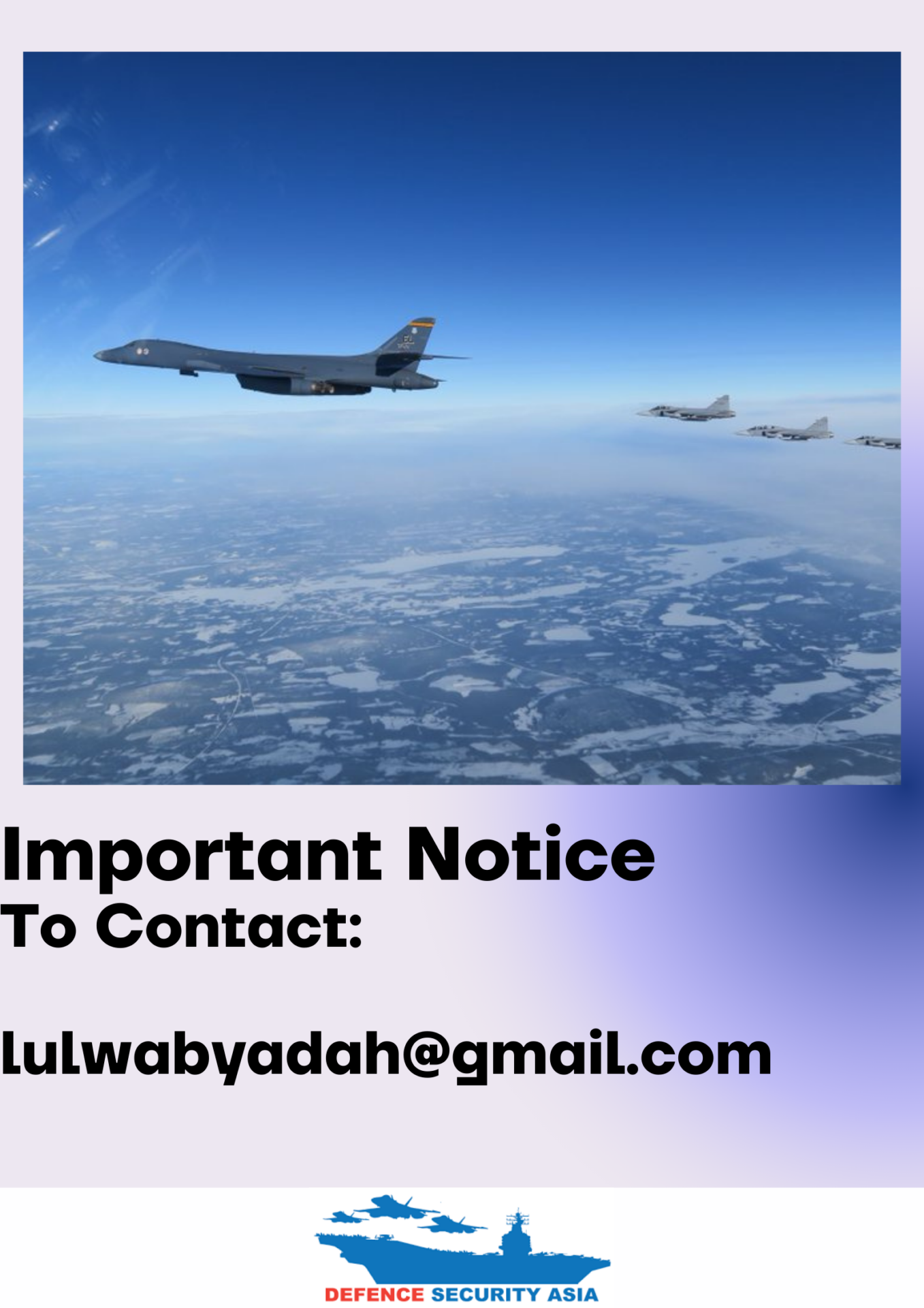THAAD Operational on Guam As US Concerns Over Chinese Ballistic Missile Threat Heighten
According to U.S. military documents, Guam will be comprehensively defended by 20 different air defense centers, collectively referred to as Enhanced Integrated Air and Missile Defense (EIAMD), consisting of radar systems and air defense missile systems capable of countering not only aircraft but also ballistic missiles.
(DEFENCE SECURITY ASIA) — The United States military has reportedly successfully conducted an comprehensive evaluation of the THAAD (Terminal High Altitude Area Defense) air defense system on Guam Island to address the threat of ballistic missile attacks, primarily from China.
The operational evaluation, known as Table VII evaluation, was carried out by the Task Force Talon ADA THAAD Battery stationed on Guam Island from March 11th to March 15th.
According to the U.S. military, this evaluation was crucial for assessing readiness and operational effectiveness while highlighting the unit’s importance in defending Guam Island and its surrounding areas from ballistic missile threats.
With the completion of this evaluation, it signifies the unit’s readiness to handle any potential ballistic missile attacks on the island, which serves as a key military base for the United States in the Indo-Pacific region.
During the evaluation, unit members operating the THAAD anti-ballistic missile defense system underwent training in scenarios simulating real combat situations, including rapid deployment and simulations of handling ballistic missile attacks.

This was to ensure their ability to deploy, operate, and maintain the THAAD system effectively.
Lt. Col. Jonathan Stafford, the commander of Task Force Talon, praised the unit’s performance, with inspection teams acknowledging the capability and effectiveness of all crews from the Talon unit operating the THAAD system in defending Guam Island.
To bolster Guam’s defense against potential ballistic missile attacks from either China or North Korea, the United States has deployed THAAD batteries.
In addition to THAAD and AEGIS/SM-31B systems, the U.S. military is reportedly planning to deploy Patriot air defense systems on Guam to address any potential ballistic missile threats from China.
According to media reports from last August, Guam Island is set to be protected by 20 different air defense centers, aiming to make it the most heavily defended area in the world, owned by the United States.
According to U.S. military documents, Guam Island will be comprehensively defended by 20 different air defense centers collectively referred to as Enhanced Integrated Air and Missile Defense (EIAMD), consisting of radar systems and air defense missile systems capable of countering not only aircraft but also ballistic missiles.

This integrated effort aims to ensure that Guam Island, strategically located in the western Pacific Ocean about 9,300 kilometers west of San Francisco, USA, is capable of addressing any aerial threats.
“The EIAMD system can defend Guam Island in a 360-degree manner across the entire island. The 360-degree defense capability can be achieved by placing EIAMD system components at various locations across the island.”
“The selection of these EIAMD locations and the addition of these locations will be considered,” states the U.S. military document.
The EIAMD system will be developed by the Missile Defense Agency and the U.S. Army, and it will operate continuously.
At present, the EIAMD system that will protect Guam Island from aerial threats is a “layered” air defense system that provides 360-degree defense against all types of aerial threats.
Despite its small size, Guam Island, which spans only 200 square miles, hosts major air, sea, and marine military bases of the United States.


Andersen Air Force Base and Apra Harbor Naval Base are the main U.S. military bases on Guam Island.
The scenario of Guam Island being attacked is not unfamiliar, as in 2020, a two-minute promotional video released by the Chinese military showed its bombers dropping bombs on an airbase resembling Andersen Air Force Base in Guam.
To ensure China’s success in its military campaign against Taiwan or Japan in the event of conflict, Guam Island needs to be “eliminated.”
China’s DF-26 ballistic missiles, also known as the “Guam Express,” only require 30 minutes to reach Guam after launch.
It poses a significant challenge for the United States to defend Guam Island, Andersen Air Force Base, and Apra Harbor in the event of armed conflict with China. — DSA



Comments are closed.